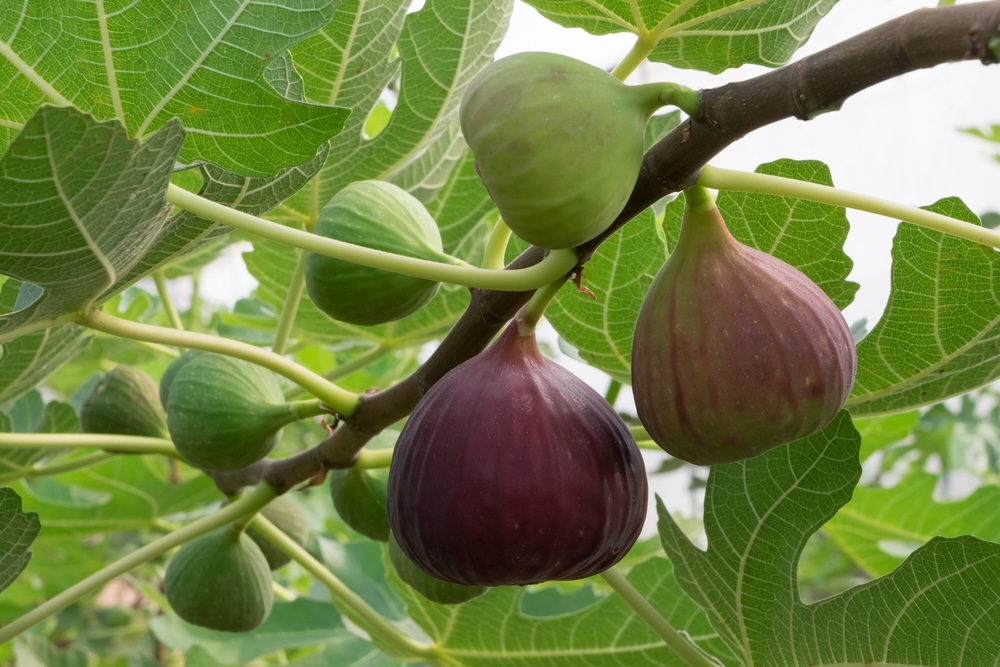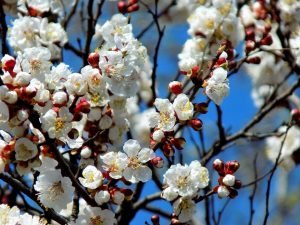A Complete Guide to Growing and Pruning Fig Trees
Everything You Need to Know About Planting, Caring for, and Pruning Fig Trees for Abundant, Juicy Harvests
Figs are one of the oldest cultivated fruits, cherished for their sweet, honey-like flavor, nutritious content, and adaptability to warm climates. Whether you’re growing them in the ground or in containers, fig trees are incredibly rewarding—but they need proper care, especially pruning, to thrive and produce abundantly.
This guide will walk you through every aspect of fig tree cultivation, from choosing the right variety and planting to advanced pruning methods that can maximize your harvest and tree health.

🌿 Why Grow Fig Trees?
Fig trees (Ficus carica) are:
- Easy to grow in USDA zones 7–11 (and in containers elsewhere).
- Self-pollinating, meaning you only need one tree to produce fruit.
- Drought-tolerant once established.
- Great for fresh eating, drying, preserves, and baking.
- Beautiful ornamental trees with broad, lobed leaves and a Mediterranean vibe.
🌱 Choosing the Right Fig Tree Variety
Your success starts with picking the right type for your climate and taste preferences. Here are some popular varieties:
| Variety | Fruit Color | Flavor | Climate |
|---|---|---|---|
| Black Mission | Purple/black | Rich and sweet | Warm, dry summers |
| Brown Turkey | Brown/purple | Mild and sweet | Cold-hardy, good for zones 6–9 |
| Celeste | Light purple | Honey-flavored | Southern US, humid zones |
| Kadota | Green/yellow | Less sweet | Hot, dry climates |
| Chicago Hardy | Purple-brown | Rich and juicy | Cold hardy to zone 6 |
Tip: For cold climates, choose Chicago Hardy or grow figs in containers that can be overwintered indoors.
🌎 Where and How to Plant Fig Trees
📍 Site Selection
- Full sun is critical—at least 6–8 hours per day.
- Well-draining soil is a must. Avoid waterlogged or heavy clay.
- Space trees 15–20 feet apart if planting more than one.
🕳️ Soil Preparation
- pH: 6.0–6.5 (slightly acidic to neutral).
- Mix organic compost, aged manure, or worm castings into the planting hole.
- Add bone meal or rock phosphate to encourage strong root growth.
🌳 Planting Fig Trees
🌿 In-Ground Planting:
- Dig a hole twice the width and just as deep as the root ball.
- Place the tree so the root flare is at or just above soil level.
- Backfill with amended soil, firming gently.
- Water deeply and mulch with 2–3 inches of straw, bark, or compost.
🪴 In Containers:
- Use a large pot (20+ gallons) with good drainage.
- Potting mix: 1 part compost, 1 part perlite, 1 part peat or coir.
- Place in full sun and protect from extreme wind or cold.
💧 Watering and Feeding Fig Trees
💦 Watering:
- Young trees: Water 1–2 times weekly for the first year.
- Mature trees: Deep water every 7–10 days during dry periods.
- Avoid overwatering—figs do not like soggy roots.
🌾 Fertilizing:
Figs don’t need heavy feeding, but benefit from light fertilization.
| Growth Stage | Fertilizer Type | Frequency |
|---|---|---|
| Early spring | Balanced 10-10-10 or compost | Once |
| Early summer | Low nitrogen (5-10-10) | Once |
| Late summer | None (to prevent new growth before frost) | – |
Avoid excess nitrogen—it encourages leafy growth at the expense of fruit.
🌸 Flowering and Fruit Production

Figs are unique: they flower inside the fruit! You won’t see traditional blossoms.
- Most varieties produce two crops: a breba crop (early summer, on old wood) and a main crop (late summer to fall, on new growth).
- Some trees only produce one crop, depending on type and region.
✂️ How and When to Prune Fig Trees
Pruning fig trees is essential for:
- Shaping and controlling size
- Encouraging fruiting wood
- Improving airflow and reducing disease
- Rejuvenating older trees
📆 Best Time to Prune
- Main pruning: Late winter or early spring (before new growth).
- Light thinning: In summer after fruiting, if needed.
Avoid pruning in fall—it can lead to tender growth that won’t survive winter.
✂️ Types of Fig Tree Pruning
1. Formative Pruning (Young Trees)
Goal: Shape the tree and encourage a strong framework.
- Year 1: Cut the main trunk to 2–3 feet tall after planting.
- Year 2: Select 3–5 main branches to keep, remove others.
- Year 3+: Let those branches develop into a well-balanced, open center.
2. Maintenance Pruning (Established Trees)
Goal: Control size and promote fruiting.
- Cut back 1/3 of new growth to encourage bushier growth.
- Remove:
- Dead or damaged wood
- Crossing or crowded branches
- Suckers at the base
- Inward-growing shoots
3. Rejuvenation Pruning (Old or Overgrown Trees)
Goal: Revive old, unproductive trees.
- Remove up to 1/3 of the oldest branches over 2–3 years.
- Thin crowded interior growth to improve airflow and light.
4. Container Fig Tree Pruning
Goal: Keep compact and productive.
- Prune back long branches by 1/2–1/3 in late winter.
- Maintain an open vase shape.
- Pinch tips of vigorous shoots in summer to slow vertical growth.
🧪 Common Problems and How to Solve Them

🐛 Pests:
- Fig beetles: Trap or net the tree to exclude.
- Scale insects: Use horticultural oil or scrape off manually.
- Aphids: Spray with insecticidal soap or neem oil.
🍄 Diseases:
- Fig rust: Yellow spots on leaves. Remove affected foliage, improve airflow.
- Root rot: Overwatering is the usual cause. Improve drainage.
- Sour fig: Caused by fruit fermentation—harvest promptly, keep fruit off the ground.
❄️ Overwintering Fig Trees
In-Ground Trees (Zones 6–7):
- Wrap trunks in burlap or frost blankets.
- Mulch heavily around the base with straw or leaves.
- Prune lightly only after last frost.
Container Trees:
- Move indoors or to a cold, dark garage or basement.
- Water sparingly during dormancy.
- Return outdoors after last frost in spring.
🍽️ Harvesting Figs
- Figs don’t ripen after picking—harvest when fully soft, drooping, and richly colored.
- Handle gently; they bruise easily.
- Pick daily in peak season to avoid overripening or splitting.
Table of Contents
❓ FAQs: Fig Tree Growing and Pruning
Q: How long does it take a fig tree to produce fruit?
- Fig trees usually bear fruit in 1–2 years if planted from a young tree, or 3–5 years from seed.
Q: Can I grow a fig tree indoors?
- Yes—choose a dwarf variety like ‘Petite Negra’, use a large container, and place in bright light (south-facing window or grow lights).
Q: Why are my figs falling off before ripening?
- Common causes: too much nitrogen, inconsistent watering, or lack of pollination in caprifigs. Address these issues based on your fig type.
Q: Should I remove suckers from the base of the tree?
- Yes—suckers divert energy from the main fruiting branches. Remove them regularly to maintain a strong structure.
Q: How tall will my fig tree grow?
- In-ground trees can reach 15–30 feet, but with pruning, they’re usually maintained at 6–12 feet.
- Container trees can be kept around 5–7 feet tall.
Q: Do fig trees need pollinators?
- Most common edible figs (like Black Mission and Brown Turkey) are self-pollinating. Wild figs or Smyrna types may require a fig wasp, but these aren’t typically grown by home gardeners.
Q: Can I prune my fig tree in summer?
- Yes—but only lightly. Focus on removing water sprouts, suckers, or overgrowth. Save major cuts for winter dormancy.
🌞 Final Thoughts: Master the Art of Fig Growing

Fig trees reward growers with bountiful harvests, low maintenance needs, and timeless beauty. Whether you’re planting a backyard orchard or just a patio pot, figs are a top-tier fruit tree for gardeners of all levels.
With the right planting location, good soil, smart pruning, and a little seasonal care, your fig tree can live for decades and provide hundreds of delicious fruits each year.

